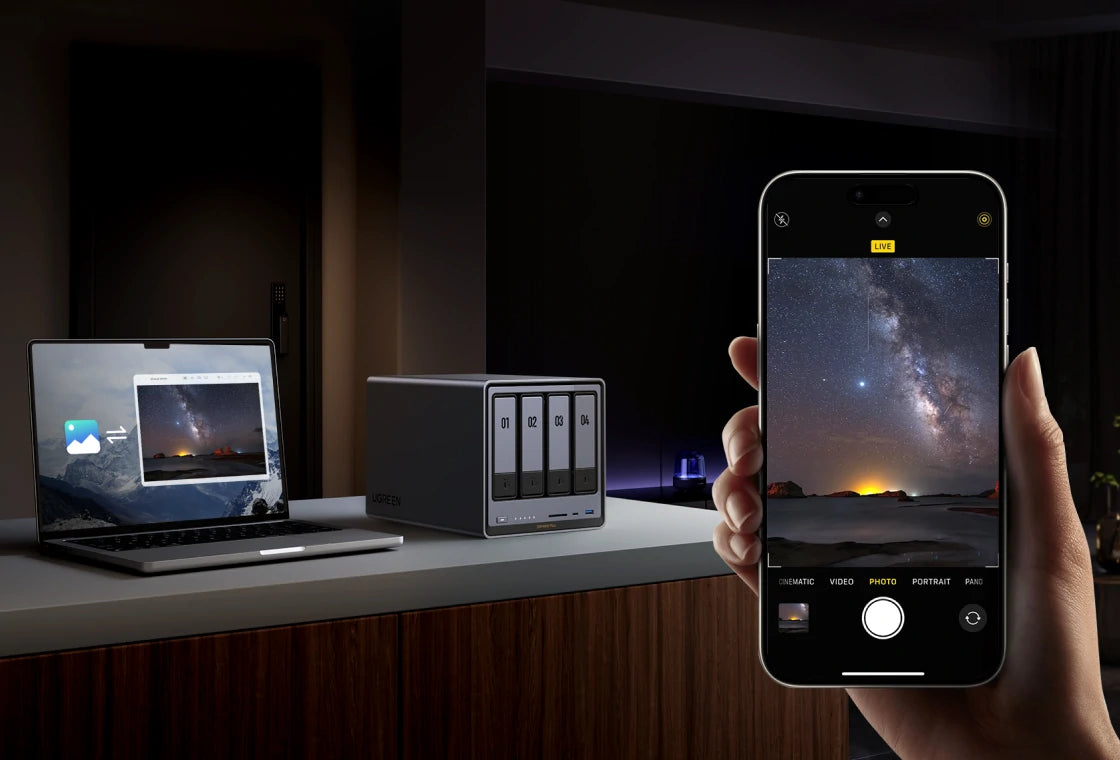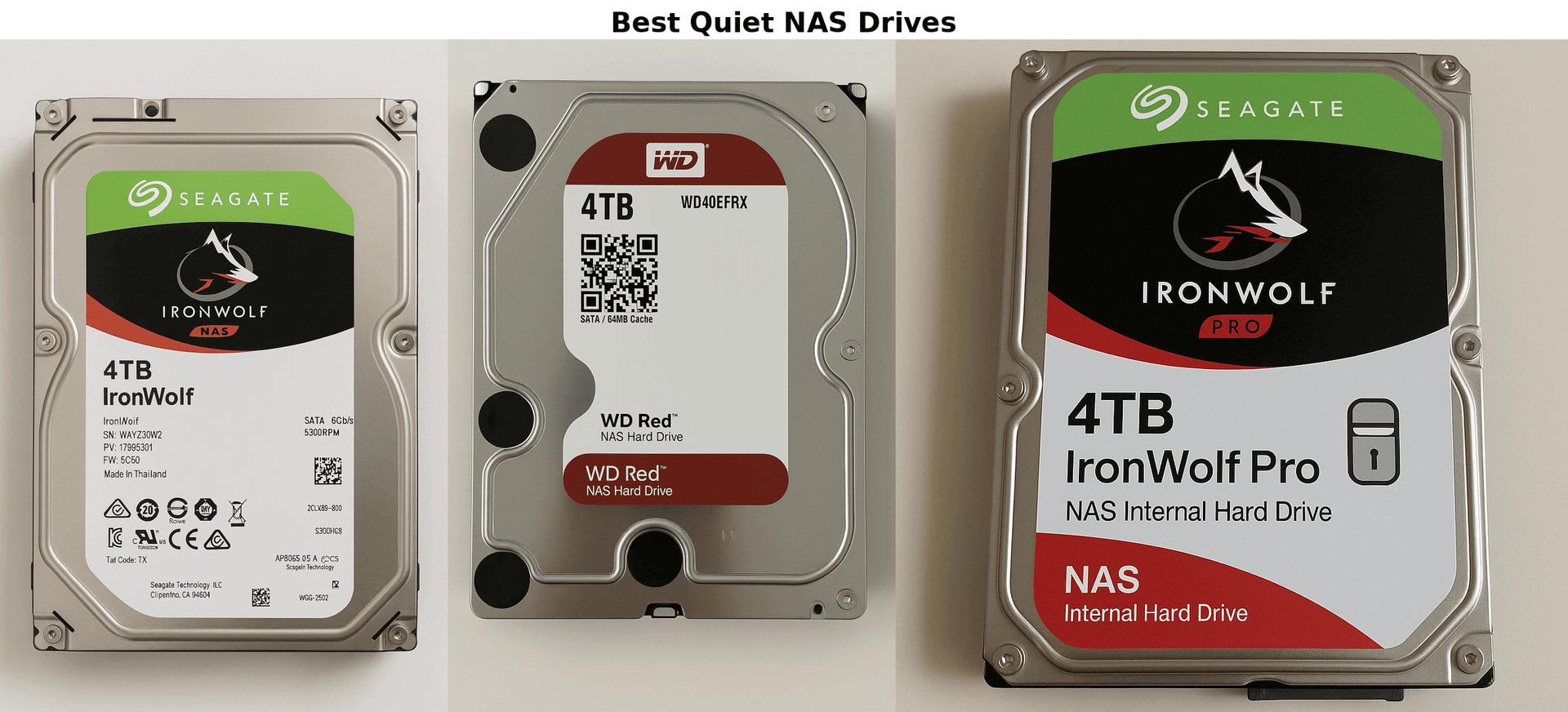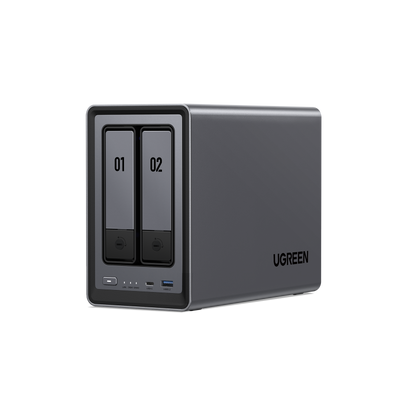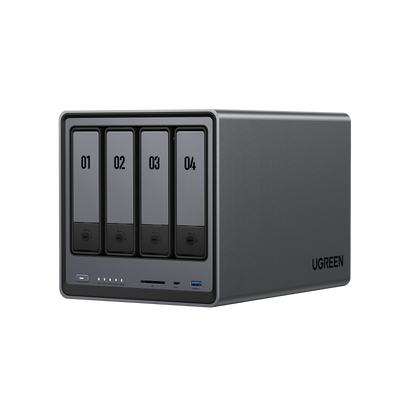DIY vs. Prebuilt: Choosing the Right Budget Home NAS for You
You’ve decided to get a NAS—but now you face the core question: DIY or pre-built? The choice isn’t only about cost; it’s a balance between full control and hassle-free convenience. Let’s compare the real differences in cost, setup, performance, and expansion to help you find the best fit for your skills and needs.

Key Takeaways:
- A NAS (Network Attached Storage) provides a secure, centralized way to store, access, and protect digital files across a home or office network.
- DIY NAS, which offers lower upfront cost and maximum hardware/software flexibility.
- Prebuilt NAS, which prioritizes ease of setup, energy efficiency, and integrated support.
- Both DIY and prebuilt NAS devices support RAID for data protection, with options like RAID 1, RAID 5, and JBOD depending on needs.
- Choosing the right NAS depends on storage requirements, technical comfort level, performance goals, and long-term value considerations.
DIY NAS Solutions
A DIY NAS can deliver a tailored solution that rivals prebuilt systems, often at a lower cost. However, it demands time, research, and a willingness to troubleshoot.
Cost Efficiency and Hardware Choices
A DIY NAS can be a budget-friendly alternative to prebuilt options. With careful planning, you could assemble a functional system for under £200. You could start with a repurposed PC, a compact Intel NUC, or a mini-ITX motherboard paired with a low-power CPU like an Intel Celeron or AMD Athlon. Add a couple of 4TB hard drives sourced during a sale, and you have a solid foundation. The catch is that these initial savings come with an investment of your time: researching compatible parts, assembling the system, and resolving any compatibility issues. For many, however, the ability to prioritise spending on specific components, like larger drives or ECC RAM, makes it a worthwhile trade.
Storage Flexibility and Data Protection
One of the standout perks of a DIY NAS is its storage versatility. Unlike prebuilt units locked into a set number of drive bays, a DIY setup lets you start small (with two drives, for example) and scale up as your needs grow. More importantly, you can implement RAID (Redundant Array of Independent Disks) to safeguard your data by combining drives to boost reliability or speed. For example:
- RAID 1 mirrors data across two drives, so if one fails, your files survive.
- RAID 5 spreads data and parity information across three or more drives, balancing capacity with redundancy.
- RAID 0 prioritises speed by striping data across drives, though it offers no failure protection.
With a DIY NAS, you choose the RAID level that fits your needs, building a custom safety net for your photos, videos, or work files.

Ease of Use and Setup Challenges
Don’t expect a DIY NAS to be as simple as unboxing a prebuilt unit. You will need to install and configure an operating system. Popular choices include TrueNAS CORE (free and robust) or Unraid (user-friendly but paid). Setting up advanced features like ZFS, a file system prized for its data integrity, means grappling with technical terms like “ashift” (sector alignment) or “ARC” (cache sizing). While not beginner-proof, it is manageable. Online tutorials, forums, and video guides can turn a steep learning curve into a rewarding challenge.
Performance Tailored to Your Needs
Performance depends entirely on your hardware choices and your intended use case. Repurposing an old desktop with a dated SATA controller might limit SSD speeds, but a purpose-built system with an Intel Core i3 and 8GB of RAM can easily handle 4K streaming or virtual machines. Here’s how to match hardware to your goals:
- Light Use: For storing documents, a low-power ARM board like a Raspberry Pi 4 is sufficient.
- Media Server: If you’re running Plex, opt for an Intel CPU with Quick Sync for smooth video transcoding.
- Heavy Workloads: For running Docker containers or intensive backups, pair a mid-tier CPU with NVMe SSDs for caching.
This flexibility allows you to fine-tune performance, giving DIY an edge over the more rigid specifications of prebuilt units.
Energy Efficiency and Form Factor
Power usage is a hidden cost to consider. A large, ATX-based NAS might idle at 40-60W, while an efficient prebuilt model often consumes under 20W. At UK electricity rates (around 28p/kWh), that could add an extra £30-£60 to your annual bill. You can mitigate this with energy-efficient components like a mini-ITX board, a DC power adapter, or laptop-grade parts. Size also matters; a tower case won’t blend into your lounge, but a compact build can be very discreet. Just be mindful of thermals, as cramming drives into a small chassis may require extra fans or a custom cooling solution.
Software Freedom and Responsibilities
The software side of a DIY NAS is a double-edged sword. Open-source options like TrueNAS Scale or OpenMediaVault offer incredible freedom, allowing you to run virtual machines or apps like Nextcloud. But with this power comes responsibility:
- Configuration: Setting up ZFS pools or network shares (SMB/NFS) requires technical knowledge.
- Security: Adding services like Pi-hole increases your security risks if not configured properly.
- Maintenance: System updates can sometimes cause compatibility issues, such as a kernel patch breaking GPU passthrough.
For tech enthusiasts, this is a wonderful sandbox for experimentation. For casual users, it can become a potential headache unless you stick to the basics and perform regular updates.
Prebuilt NAS Devices
For many, the appeal of a prebuilt NAS lies in its simplicity: unbox it, plug it in, and start storing. But this convenience comes at a price, and not all prebuilt devices are created equal.
Cost: Upfront Investment vs. Long-Term Value
A prebuilt NAS might seem like the more expensive option on paper. For instance, the UGREEN 2-bay NAS system often retails at a promotional price of around £263.99. However, that price includes more than just the hardware. It also covers a warranty (often 2 years), dedicated customer support, and regular software updates that keep your system secure and functional. Over time, this ecosystem can save you both money and headaches. Think of it like buying a smartphone; you’re paying for a seamless experience, not just the device itself.
{{UGPRODUCT}}
Storage Options: Scalability Made Simple
Prebuilt NAS devices come with a fixed number of drive bays, typically two, four, or eight. This determines your maximum internal storage capacity. Many models also support RAID, allowing you to mirror drives for safety or stripe them for speed, just like a DIY setup.
- RAID 1 (mirroring) ensures your data survives a single drive failure.
- RAID 5 (striping with parity) offers a balance of capacity and protection for three or more drives.
- JBOD (Just a Bunch Of Disks) lets you use each drive individually without any redundancy.
If you outgrow your storage, many brands sell expansion units, though these can be costly. For most users, starting with a 4-bay model provides plenty of room to grow.
{{UGPRODUCT}}
Ease of Use: Plug, Play, and Forget
This is where prebuilt NAS devices truly shine. The setup process is a breeze: install your drives, connect the NAS to your router, and follow a simple web-based wizard. There are no command lines or driver installations, just a few clicks and you’re ready to go. Brands like UGREEN NAS provide intuitive software and mobile apps for remote access and management. It’s like having your own personal cloud without the subscription fees. For families or small businesses, this simplicity is invaluable.
Performance: Optimized for Everyday Tasks
Prebuilt NAS devices are engineered for specific purposes, whether that’s streaming films, backing up photos, or serving files to a home office. While most entry-level models use dual-core ARM processors and 1-2GB of RAM, some newer devices are raising the bar. The UGREEN DXP2800, for example, features a 12th Gen Intel® N100 processor and 8GB of DDR5 RAM, offering a balanced mix of performance and efficiency.
- Light Use: Ideal for personal storage and automated backups, its Intel chip offers a significant advantage over typical ARM-based models.
- Media Streaming: With Intel Quick Sync support, it can handle smooth Plex transcoding, even for 4K content.
- Power Users: Expandable RAM and support for NVMe cache drives make it suitable for light virtualisation, Docker containers, and collaborative workflows.
Unlike a DIY NAS, the CPU isn’t upgradable, but with impressive hardware and expansion options, a modern prebuilt NAS offers predictable performance for most home and small office setups.
Energy Efficiency and Form Factor: Compact and Quiet
Prebuilt NAS devices are designed to sip power. A typical two-bay unit idles at 10-15W, while a four-bay model rarely exceeds 30W under load. At UK electricity rates, that’s only about £20-£40 per year for 24/7 operation. They are also compact, with a two-bay NAS being roughly the size of a small toaster. Most are quiet enough to sit on a shelf, though the drives can hum during heavy use.
Choosing the Right Prebuilt NAS
Picking a prebuilt NAS boils down to three key questions:
- How much storage do you need? A two-bay NAS can offer plenty of space for most homes, while a four-bay model provides more room for future growth. If you’re still deciding between these setups, our detailed guide on choosing a 2-bay or 4-bay NAS explains the trade-offs in capacity, cost, and scalability to help you make the right choice.
- What will you use it for? Basic file storage requires less power than running a Plex server or a home lab.
- How much do you value support? Brands like UGREEN offer excellent documentation and customer service, which can be a lifesaver.
Budget also matters. Expect to pay around £263.99 for a good entry-level two-bay model, and remember that drives are sold separately.




